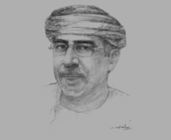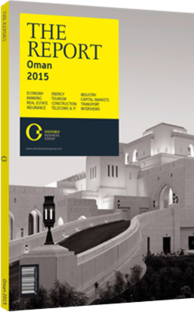Jaafar bin Mohammed Al Sajwani, Minister of Agriculture and Fisheries Wealth: Interview

Interview: Fuad bin Jaafar bin Mohammed Al Sajwani
How are agriculture and fisheries development funds being prioritised to create an enabling and sustainable environment for these sectors?
FAUD BIN JAAFAR BIN MOHAMMED AL SAJWANI: The government has approved a budget of $1.3bn for the development of fisheries and aquaculture for 2013-20. These funds are being allocated to the development of the sector with the construction of 17 multi-purpose fishing harbours complete with infrastructure for ice production, cold storage, markets, vessel repair yards and social infrastructure, such as living spaces, berths for ferries, tourist boats and small commercial vessels. The fishing sector is also being supported by the development of logistic and market infrastructure to ensure that fish reach consumers fresh. The aquaculture segment is also getting developmental support. We have established a firm with the Oman Investment Fund that provides OR30m ($77.68m) in equity funds for aquaculture. The Oman Aquaculture Development Fund has the specific remit to develop a range of sustainable projects that will commercialise and highlight aquaculture opportunities such as fin fish, abalone, shrimp and seaweed culture.
The government has also approved an outlay of OR61.83m ($158.94m) for the agriculture and livestock sectors, out of which OR27.75m ($71.85m) is earmarked for agricultural development. These funds support the transfer of modern technologies, integrated pest management, soil protection and the development of traditional farming systems. The Agriculture and Fisheries Development Fund has been established by royal decree to provide funds for development projects within the sector. These projects range from studies and surveys to enhancing scientific research. The fund has an annual allocation of 1% of the sector’s GDP.
Where can agriculture and fisheries benefit the most from international knowledge transfer and technological innovation?
AL SAJWANI: Both sectors rely heavily on the transfer of international knowledge and technology. Locally, we are building our capacity through Sultan Qaboos University and other centres of higher education. In the fisheries sector we also employ aquaculture specialists to evaluate proposals for development projects and ensure that they match the country’s strategic goals. Pairing the right technologies with the perfect opportunities is extremely important in ensuring economic development and commercial sustainability.
In the agriculture and livestock sectors, there are many projects that focus on increasing productivity, breeding and genetic improvements, biotechnology and water-use efficiency. The government is heavily focused on increasing value addition to domestic agricultural produce, so post-harvest processing is another segment we are looking to develop.
What do you identify as the main incentives for investment in fisheries and aquaculture, and what can be done to encourage investment?
AL SAJWANI: After a period of extensive review and assessment, Oman opened its doors to aquaculture investments at the end of 2011 with new investment guidelines, and in 2012 we established new aquaculture laws. Oman has extensive resources that are suitable for aquaculture development; however, we are aware that this sector must be developed in an environmentally sustainable manner. We are working to strike the right balance between protecting the environment and maximising its potential.
We have come up with a variety of investment incentives for aquaculture that include corporate tax holidays, and relaxed rules for repatriation of funds or salaries, personal income tax for employees, import duties on equipment and visas for specialists needed for company development. Other incentives include a stable political and legislative environment, excellent infrastructure, exceptional international transport links, which are constantly being upgraded, and a central government that is continually improving Oman’s workforce through social and educational development.
You have reached the limit of premium articles you can view for free.
Choose from the options below to purchase print or digital editions of our Reports. You can also purchase a website subscription giving you unlimited access to all of our Reports online for 12 months.
If you have already purchased this Report or have a website subscription, please login to continue.

